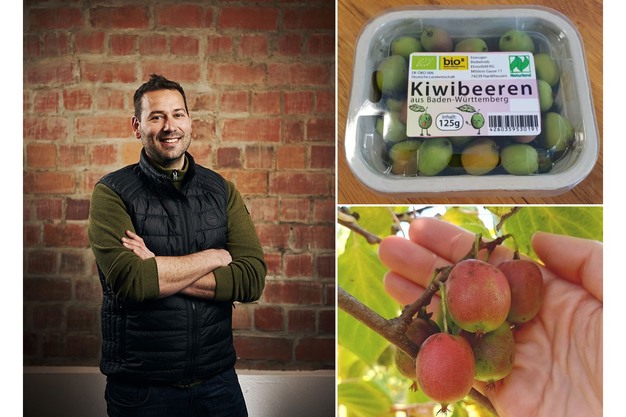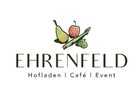This year's kiwi berry harvest at the Ehrenfeld farm in the Heilbronn district got off to a particularly good start. "The harvest began in the last week of August, around two weeks earlier than usual. We survived the six to seven frosty nights well thanks to state-of-the-art frost protection irrigation, so we expect to have around 90 per cent marketable produce. At five to six tonnes, the net yield per hectare is significantly higher than in the previous year, when we were able to harvest around three to four tonnes per hectare due to frost damage and russeting." The fruit sizes and colouring of his Naturland kiwifruit are also consistently satisfactory, says Managing Director Ingo Ehrenfeld.
Around 95 per cent of his yield finds its way to consumers via (southern) German food retailers, while a small proportion is marketed via his own farm shop. He mainly cultivates the two red varieties Weiki and Ananasnaya, which are offered simultaneously from the beginning to the end of the season. Ehrenfeld: "These may not be the most visually appealing varieties, but their flavour is very convincing. This means that once you have tried them, you are very likely to buy them more often. The varieties are very similar, the only difference is that the Weiki is slightly higher yielding and more frost-resistant."

Ingo Ehrenfeld has been growing kiwi berries for 15 years now on a total of around ten hectares. He also runs a conventional top fruit and green asparagus farm.
ULO storage allows season extension
In regular food retailers, local kiwi berries are mainly sold in the tried-and-tested 125g trays, while natural food retailers mainly sell open 350g cardboard trays. However, the business is particularly competitive, explains Ehrenfeld. "The product has established itself well over the years. Unfortunately, low-priced goods from Italy and Portugal are also listed during the domestic season. Although this was also the case in other years, this price competition seems to have become fiercer with the inflation. Accordingly, we are now also looking at alternative sales channels, such as subscription companies and the like."
The innovative fruit producer is now hoping for the second half of the season in particular. "After several attempts, we will be storing larger quantities in the ULO warehouse for the first time this year to extend the season accordingly. Normally, we sold out by the end of October at the latest, but I'm now confident that we'll be able to supply until mid-November."
Distortion of competition jeopardises domestic kiwi berry
According to Ehrenfeld, the minimum wage is the decisive factor. "Since our first harvest year, minimum wages have more than doubled. This has disastrous consequences for a labour-intensive product like the kiwi berry. Top fruit cultivation can be mechanised to a certain extent, but this is hardly possible with kiwi berries. The bottom line is that 80 per cent of the costs are accounted for by harvesting and processing the fruit. Considering the continued minimum wage increase, I doubt whether and in what form this product will still be available from German cultivation in the future. We have long since exceeded the pain threshold. In my opinion, the only fair solution would be an equal wage increase in all EU countries," he concludes.
For more information:
Ingo Ehrenfeld
Bio-Betrieb Ehrenfeld KG
Mittlere Gasse 17
74239 Hardthausen - Kochersteinfeld
Phone: 07139 - 933146
Mail: [email protected]
www.obsthof-ehrenfeld.de
